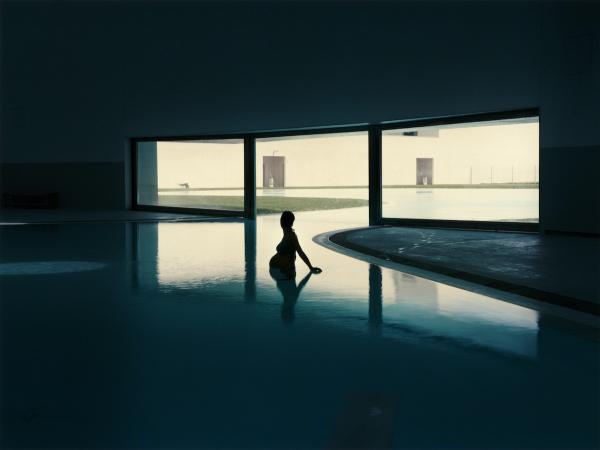Featuring just under forty artists making photo-based artwork after the year 2000 and identifying as women born or working in Europe, In the Now: Gender and Nation in Europe, Selections from the Sir Mark Fehrs Haukohl Photography Collection is a unique time capsule of the past two decades. With works selected from the collection of Sir Mark Fehrs Haukohl—donated to LACMA and the Brooklyn Museum in 2021—the exhibition explores the ways in which traditional descriptive categories such as gender, nation, and photography are being challenged by artists and the societies in which they live—and posits that women photographers practicing in Europe today are global citizens exploring chosen identities.
Join me in a brief walk through of the exhibition’s thematic sections, troublesome though they might be to pin down…
Gender
While gender is often the first detail we learn about an artist who identifies as a woman, it is seldom the sole interpretive framework that should be applied to her practice. Sir Mark Fehrs Haukohl’s collection, initiated in 2000, addressed a longstanding gender imbalance in the art world by focusing on women artists. The collection can also be situated within today’s larger cultural conversation about the meaning and importance of gender. In the Now suggests that the category “woman” need not be cisgendered: it can be considered on a spectrum of personal, subjective identification. Many of the artists featured here do not regard gender as the defining aspect of their work, instead underlining that “artist” is a gender-neutral term; others directly address gender through their imagery, exploring the idealization of the female form, issues of beauty and the gaze, the role of women in society, the politicization of that role, and women as agents of change.
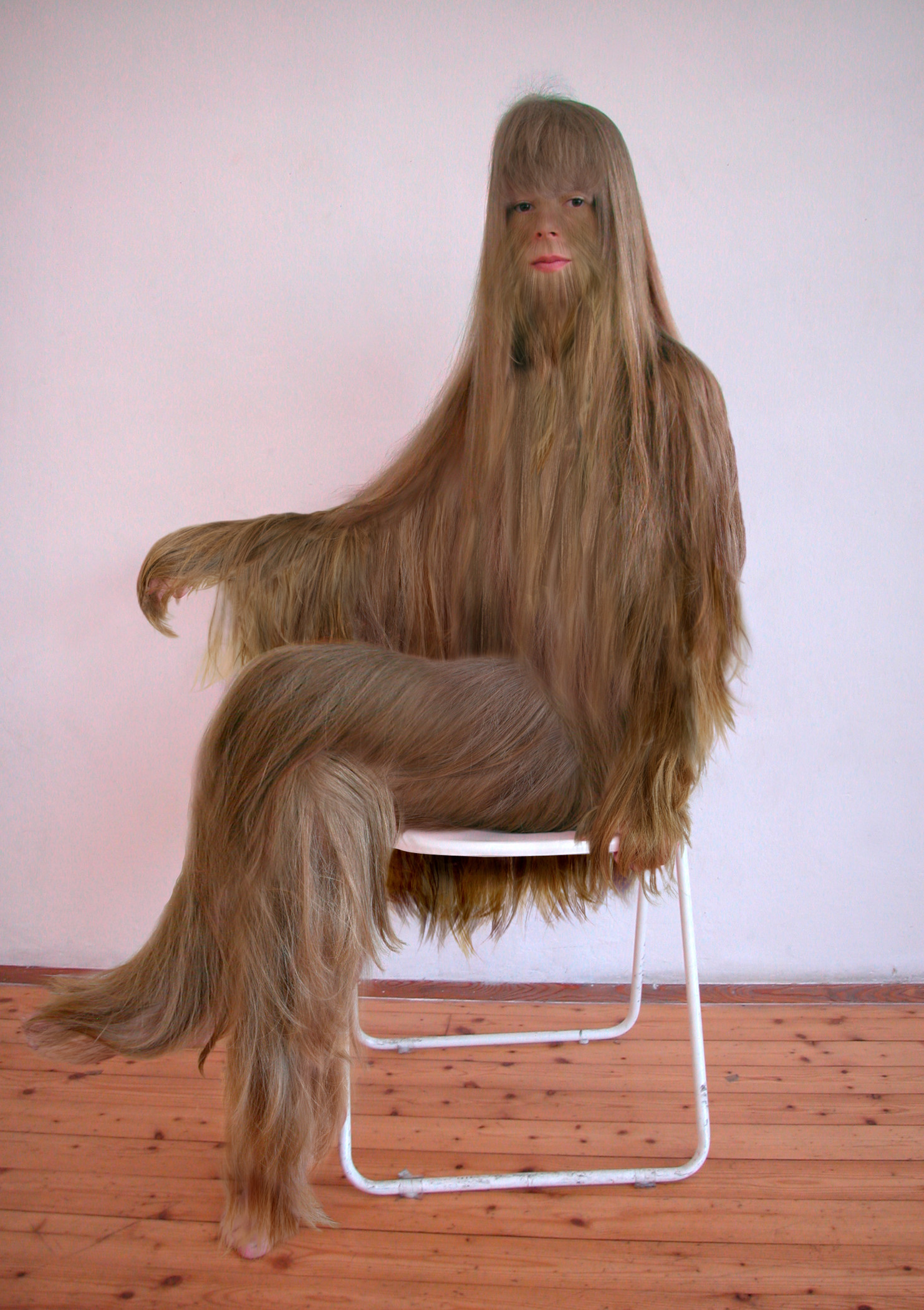
In Because Every Hair Is Different, Marlene Haring explores hair as a powerful physical marker of femininity and desirability. Beginning with the idea that long, fine, blond tresses are the quintessence of feminine beauty and pushing it to an absurd extreme, Haring transforms herself into a surrealistic creature. Her gesture, at once performance, installation, and photography, complicates the link between hair and beauty: potentially, hair is also burdensome and grotesque, demanding an endless investment of time and money.
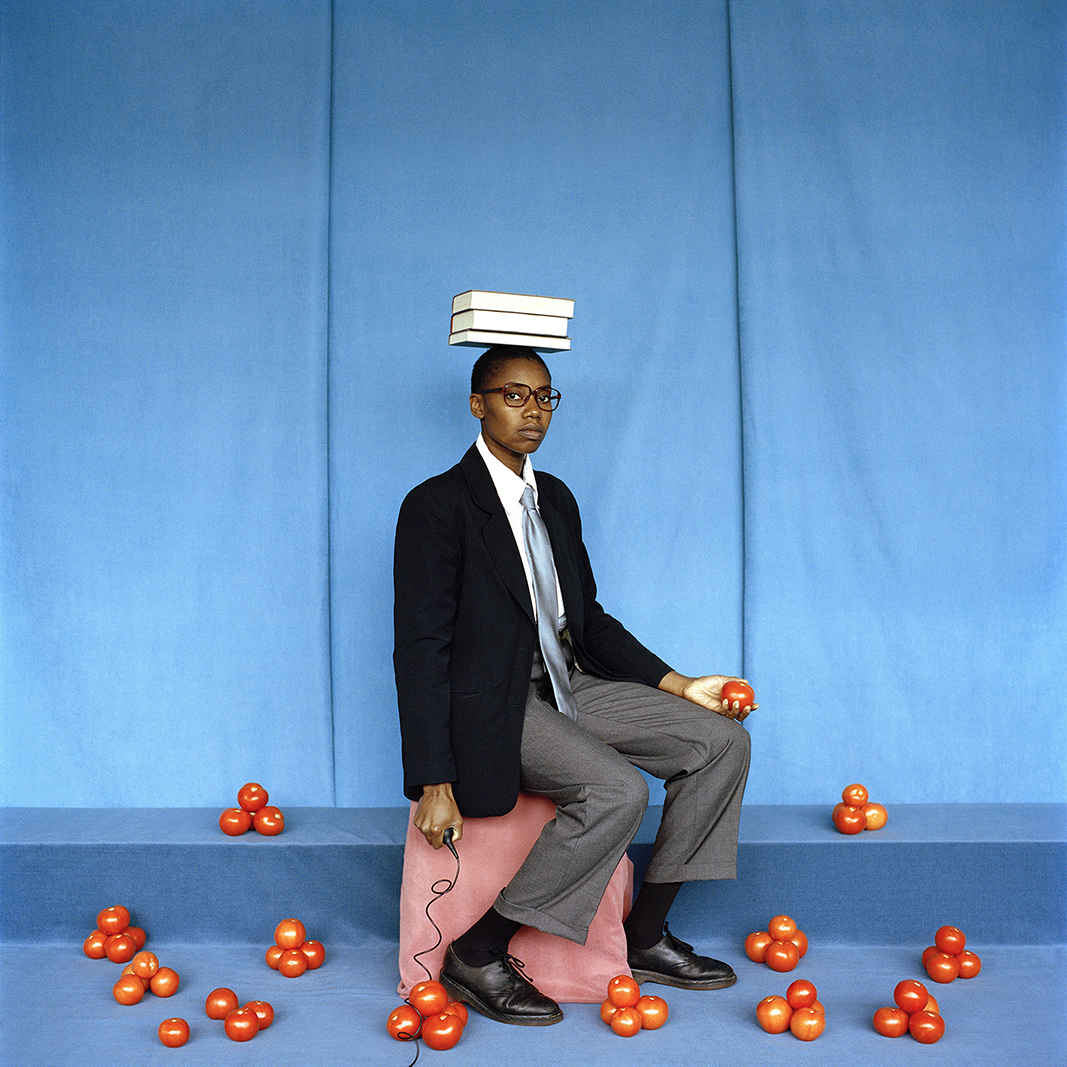
In her series Encounter, Silvia Rosi reenacts images from a “lost” family album, posing as either her mother or father and including details that represent their migration from Togo to Italy. Here, Rosi poses in front of a colorful backdrop that evokes the vibrant practice of West African studio portraiture. She is dressed as her father, and each element in the scene symbolizes an aspect of his life: the suit and tie signify his status as a professional man; the set of books atop Rosi’s head (following Togo tradition) indicate that he is educated; and the tomatoes that surround her represent the dramatic change in status her father experienced upon arriving in Italy, where he first worked in the fields of a farm.
Nation
The European Union, founded in 1993, promised its citizens “four freedoms”: the free movement of goods, services, people, and money. Most of the artists in this exhibition came of age in the so-called new Europe, which, despite its stated aspirations, is still shadowed by the nationalism that has plagued European countries and their colonial territories since the nineteenth century. Whether considering their countries of origin or their adopted homes, these artists grapple with the symbols, legacies, and traumas of nationalism past and present. When Sir Mark Fehrs Haukohl initiated this collection in 2000, his parameters excluded Russia but included former Soviet republics and the United Kingdom. Future acquisitions can reflect shifting concepts of Europe as a pluralistic geopolitical and cultural entity.
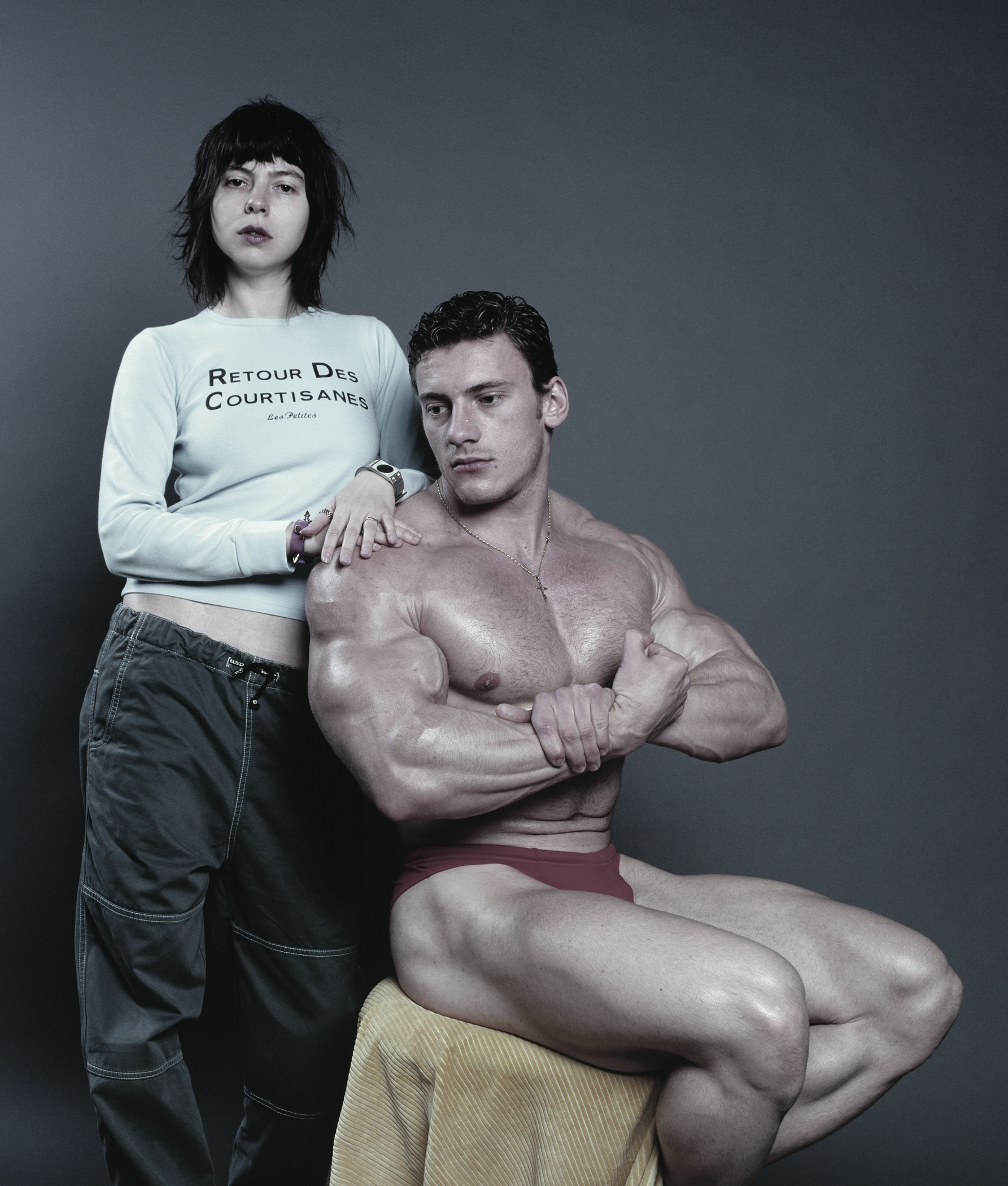
Alexandra Croitoru’s double portraits blend cynical humor and deadpan formality, mimicking standard compositions for such images. In each, the man is seated and looks away from the camera, while the artist stands behind him, touching his shoulder and staring into the lens. Croitoru’s stereotypically masculine companions are a bodybuilder who trained at her local gym and (not imaged) Adrian Năstase, prime minister of Romania at the time this work was made (who was later tried and imprisoned for corruption). Although her gestures and posture appear deferential, Croitoru’s gaze is defiant.
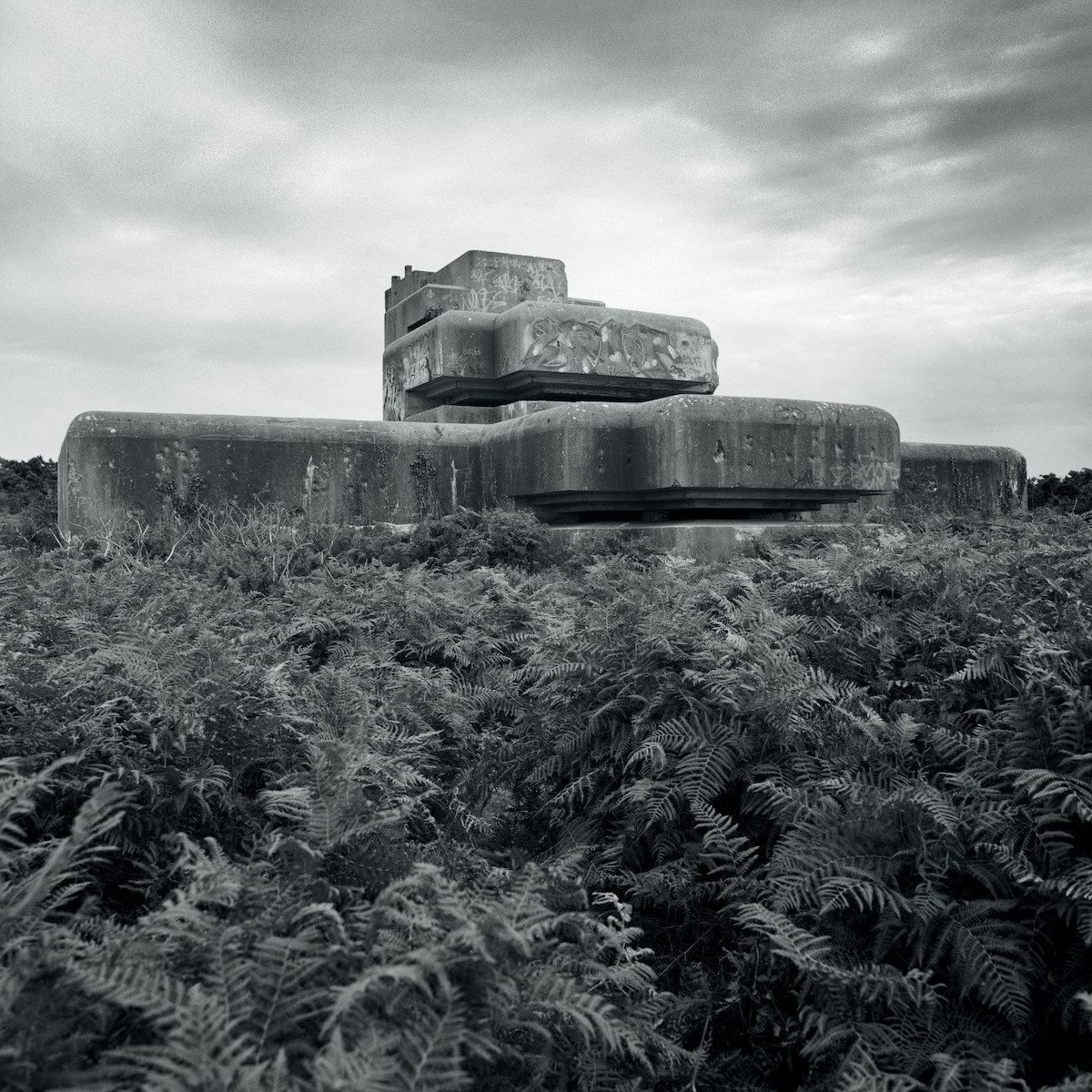
Twin sisters Jane and Louise Wilson have spent three decades photographing sites that shaped 20th-century European history. Sea Eagle is part of a series of large-scale photographs depicting Nazi bunkers built along the coastline, from Spain to Norway, during World War II. The Brutalist structures survive, though they are now crumbling into the sea. Looming over the viewer and thus assuming some of the bunker’s original hateful power, this black-and-white photographic document asks whether the ideology the building represents should be fetishized, conserved, or destroyed.
Photography
In the 21st century, photography has almost fully transformed from a light-sensitive, chemically-based medium to one that uses digital technologies for image capture, storage, and dissemination. As the volume and mutability of images increase, the responsibility of understanding photography and its histories has become increasingly urgent. Working in the wake of these changes and in the tradition of 20th-century avant-gardes, artists represented in the Haukohl Collection have explored the nature of photography in various ways. Some have journeyed back to early photographic methods, using chemical processes to make cameraless photographs directly on paper. Others question the idea of medium specificity, blending photography with painting, sculpture, film, and performance. Many of the artists are concerned with the construction, materiality, and circulation of photographic images, particularly in relation to consumer culture. Future growth of the collection within this area might include works by artists who abandon paper as a material support for the image, moving fully into the digital realm.
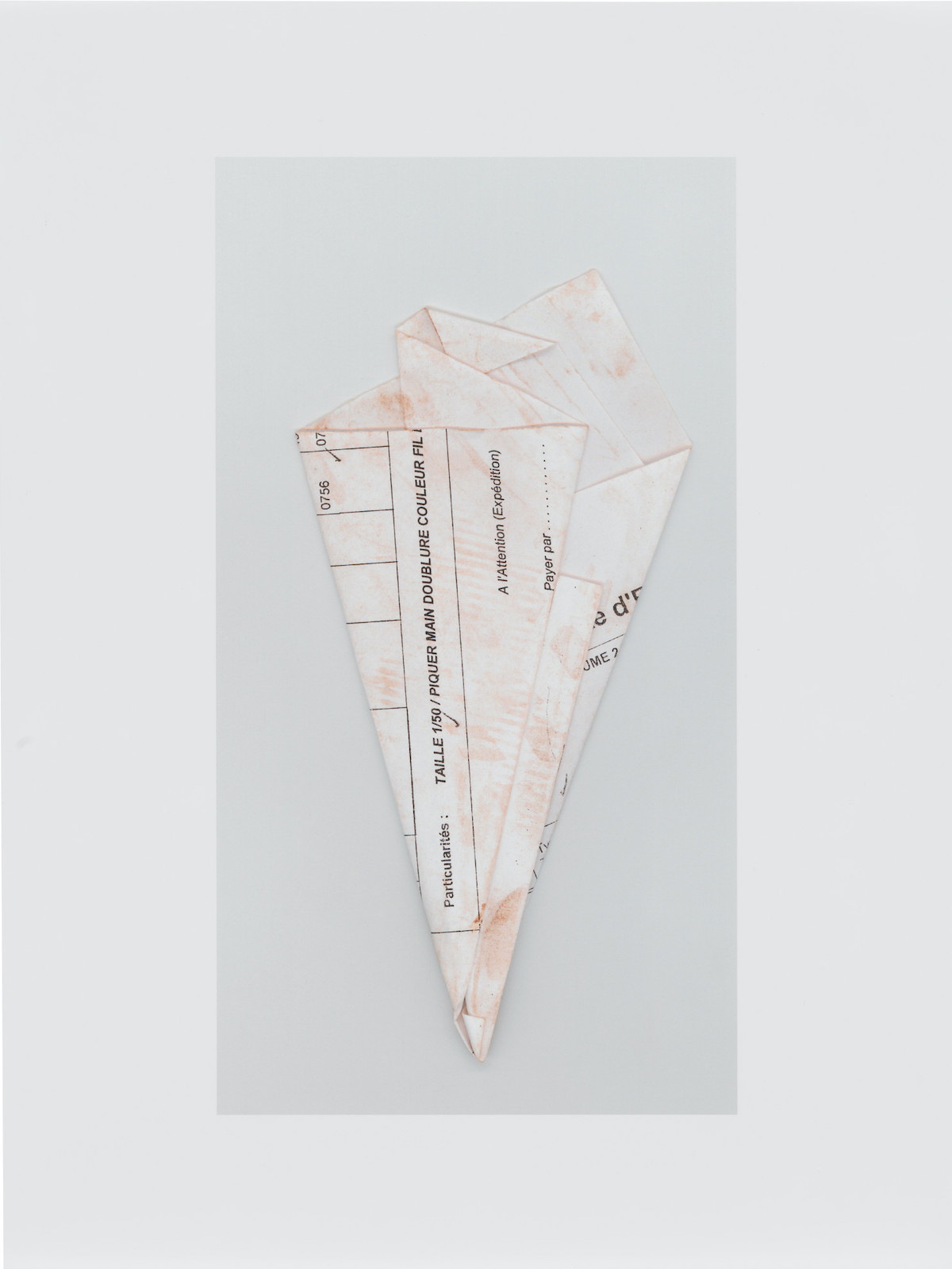
Yto Barrada made Papiers Pliés by collecting the recycled paper wrappings used by vendors of snack foods—chickpeas, peanuts, sunflower seeds—in Perdicaris Park in Tangier, Morocco, then folding the detritus into geometric forms and photographing it. The printed French words taille (size) and expédition (shipment) indicate the sheets’ original function as forms from a textile factory and allude to Morocco’s past as a French colony (1912–56). Focusing on documents transformed first into food containers, then into trash, and finally into art, Barrada brings attention to dynamics between Western nations and the global South.
![Shirana Shahbazi, [Farsh-13-2006], 2006, Los Angeles County Museum of Art, promised gift of The Sir Mark Fehrs Haukohl Photography Collection at the Los Angeles County Museum of Art and Brooklyn Museum, © Shirana Shahbazi, digital image © Museum Associates/LACMA](https://unframed.lacma.org/sites/default/files/attachments/PG2018_12_151-20210930-Access.jpg)
Shirana Shahbazi makes photographs in traditionally European styles and genres—including still life, landscape, and, in this case, portraiture—questioning hierarchies and sometimes translating her images into different mediums. In [Farsh-13-2006], a photograph of a young woman’s head reminiscent of Johannes Vermeer’s Girl with a Pearl Earring (c. 1665), has been made into a hand-knotted carpet by artisans in Shahbazi’s native Iran. These multiple incarnations encourage us to consider the various ways signs can be rearranged and recycled today.
The exhibition In the Now: Gender and Nation in Europe, Selections from the Sir Mark Fehrs Haukohl Photography Collection is now on view at LACMA through February 13, 2022.



